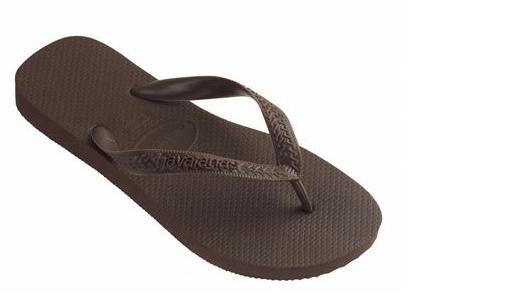AS PUBLISHED IN YOGA NATION
It’s winter here in Rio de Janeiro and just shy of beach weather. Temperatures are in the 70s and quite a bit of rain, interrupted by the gloriously tropical sunny days that Brazil is known for.
The classic flip flop, no bells and whistles
The classic flip flop, no bells and whistles
But in Rio you don’t have to be heading to the beach to wear flip flops. In fact, flip flops might just be the national shoe.
I have been amazed at what Brazilians can do in these flimsy strips of rubber.
I’m living in an old part of the city that has colonial-era houses and cobblestone streets. Cobblestones could more accurately be named “hobblestones” : not easy to walk on, and even harder in the rain. But even so, Brazilians in flip flops regularly pass me on these streets.
And I’m wearing sturdy Dansko sandals.
Here are some other things they do in flip flops:
Run for the bus (ever tried this? Very difficult. Toe cramps!)
Do dances that require fast and nimble foot work—like samba and forro.
Climb ladders and scaffolding.
Lug heavy things up steep hills.
Chase thieves.
Go to work (as in, office work).
Walk with canes.
Hustle themselves and their small children (who are also wearing small flip flops) onto a careening form of public transit.
Ride motorbikes.
And, the wedge flip flop really ups the ante. (The white shoes above are modest compared with the enormous platforms I’ve seen on women in Rio–like these brown ones.)
Apparently, Brazilians are in good company: versions of the sandal with the toe-strap date back to Egyptians and Romans, some made from papyrus and palm leaves. According to the site PecheBlu:
Styles varied with the differing placement of the toe strap, as subsequent civilizations preferred using different toes. The Greeks for example made use of the big toe; the Romans, the second toe; and the Mesapotanians, the third toe. These distinctive, physical entities were recognised and captured in Egyptian statues, and this was thought to represent the celebration of other cultures.
Interesting factoid: Havaianas, the famous Brazilian brand, was established in 1962, inspired by Japanese sandals called the Zori, made of ‘rice straw’ soles and fabric bands. This explains the “textured rice pattern” on the soles of all Havaianas… Check your pair.
And guaranteed your legs will be completely sore after a week charging around in only flip flops!


